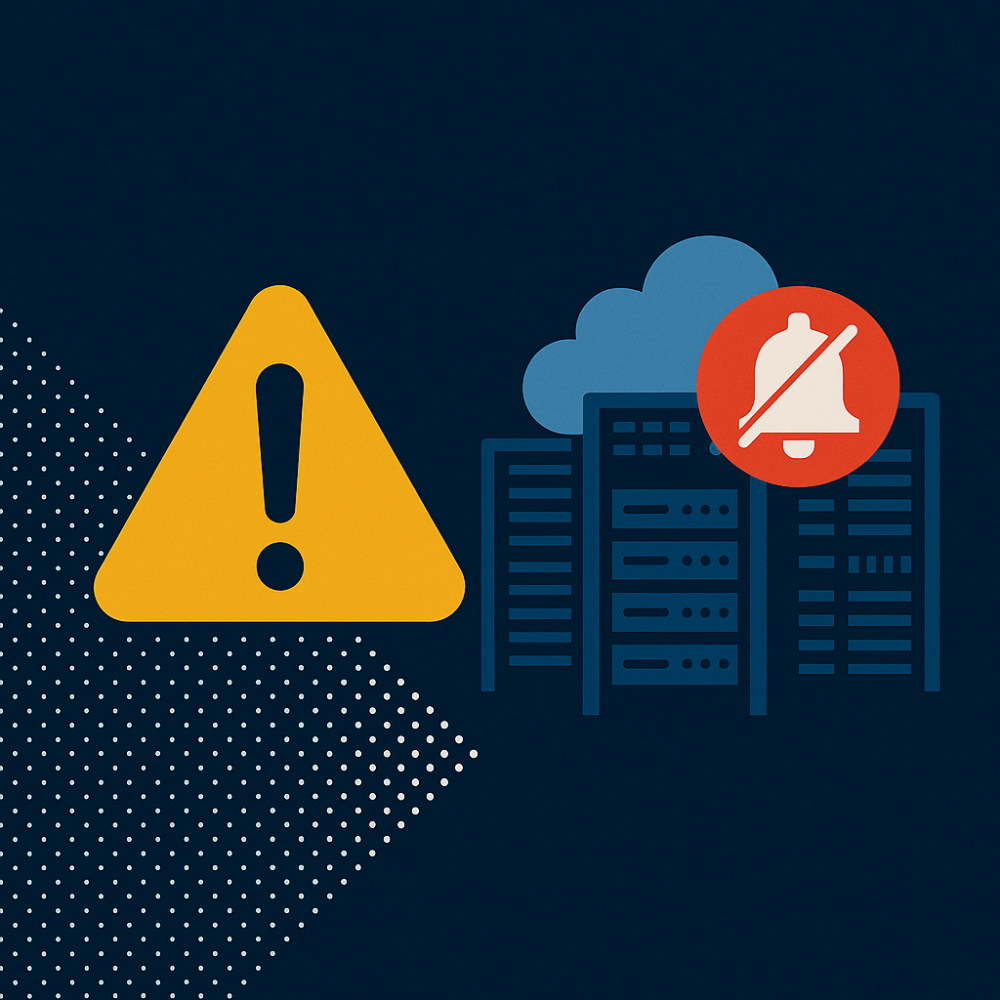Enterprise Asset Management (EAM) is more than a tool—it’s a strategic approach to managing the full lifecycle of your organization’s physical assets. From acquisition and deployment to ongoing maintenance and eventual replacement, EAM systems empower you to make smarter, data-driven decisions that reduce downtime, cut operational costs, and maximize asset utilization.
But in mission-critical environments, traditional EAM systems are often not enough.
Why Traditional EAM Isn’t Enough in Mission-Critical Environments
Traditional EAM systems were built to manage assets—they were not built to manage the complexity, risk, and pace of change within mission-critical environments like data centers, financial institutions, or global enterprise facilities.
In high-stakes environments, the consequences of downtime are measured in millions. Yet, traditional EAM systems often:
- Operate in silos, making it hard to get a real-time, portfolio-wide view of asset health and performance.
- Rely heavily on manual data entry, leading to “dirty data” that undermines predictive maintenance and decision-making.
- Offer limited visibility into asset interdependencies, increasing the risk of cascading failures.
- Lack built-in compliance and audit tools, requiring costly manual processes to meet regulatory standards.
- Fail to integrate fully with building systems, leading to missed opportunities for automation and anomaly detection.
That’s where MCIM steps in—delivering intelligent asset management purpose-built for the complexity, risk, and scale of today’s facilities.
MCIM goes beyond EAM, with:
- Dependency mapping, predictive insights, and automated data validation
- Compliance tracking, digitized workflows, and enhanced audit readiness
- Real-time usage data, forecasting, and procurement automation
What Is EAM?
Enterprise Asset Management enables organizations to track, manage, and optimize the performance of physical infrastructure across their entire lifecycle. Core EAM capabilities typically include:
- Asset tracking and condition monitoring
- Work order and preventive maintenance management
- Inventory and spare parts control
- Performance reporting and lifecycle analysis
The result? A centralized view of your resources that helps you align maintenance, capital planning, and operational decisions with your business goals.
Why You Need an EAM System—Now
If your current asset management strategy relies on spreadsheets, disconnected tools, or outdated CMMS platforms, you’re not just missing insights—you’re exposing your business to avoidable risk and inefficiency.
Here are some of the key benefits of Enterprise Asset Management—especially when powered by MCIM:
- Reduce Downtime – Unplanned outages are expensive. EAM helps prevent failure through proactive maintenance scheduling and real-time condition monitoring.
- Improve Asset Utilization – Know which assets are underperforming or underused—and take action to optimize them.
- Increase Operational Efficiency – Digitize and standardize workflows, reduce paperwork, and eliminate duplicate systems.
- Lower Maintenance Costs – Better visibility means smarter repair scheduling, lower labor costs, and fewer rush orders for parts.
- Gain Visibility Into Performance – Monitor trends, detect anomalies, and benchmark assets across your portfolio with confidence.
- Plan Capital with Confidence – EAM equips your teams with clean data and lifecycle analytics to make better investment decisions.
MCIM in Action: Immediate ROI from Day One
Case Study: Immediate Cost Savings with MCIM Maintenance Rounds
One client used MCIM to digitize and streamline facility maintenance rounds, resulting in faster issue detection, reduced manual reporting, and measurable cost savings—within weeks of deployment.
Case Study: Preventing Systemic Battery Failures
Another organization used MCIM’s EAM and incident reporting tools to identify and resolve widespread UPS battery failures. By exposing installation and vendor issues through real-time analytics, they improved reliability and optimized future capital planning.
The Bottom Line
Implementing an EAM system doesn’t just improve how you manage your assets—it transforms how your business makes decisions.
With MCIM, you don’t just track assets. You:
- Identify risks before they become failures
- Understand the real cost and condition of every critical system
- Equip your teams with data they trust
- Replace reactive repairs with proactive insight
- Reduce total cost of ownership (TCO) across your portfolio
Get Started
If you’re ready to take your asset management strategy from reactive to resilient, MCIM can help.
Talk to an expert to see how MCIM transforms Enterprise Asset Management into a strategic advantage for mission-critical environments.
Original Post from October 27, 2022
Enterprise Asset Management (EAM) is a comprehensive approach to managing physical assets throughout their entire lifecycle. EAM empowers businesses to minimize downtime, reduce operational costs, and improve overall asset utilization by effectively tracking and managing assets.
EAM systems are designed to track and manage all aspects of an asset’s lifecycle, from acquisition and installation to ongoing maintenance and eventual replacement. EAM systems typically include work order management, asset tracking, and preventive maintenance.
EAM offers a complete picture of an organization’s resources and assets, enabling knowledgeable decision-making about how to use them most effectively to meet organizational goals. As a result, businesses implementing an EAM system can see significant asset utilization and operational efficiency improvements.
Why you need an EAM
If your business is not currently using an EAM system, there are several good reasons to consider implementing one. Here are just a few of the benefits of Enterprise Asset Management:
- Reduced downtime: By tracking assets and managing maintenance schedules, EAM systems can help businesses avoid costly downtime due to unplanned repairs.
- Improved asset utilization: EAM systems make it easy to track how assets are being used and identify opportunities for improved utilization.
- Increased operational efficiency: EAM can help businesses streamline their operations and reduce wastefulness.
Case Study: Achieving immediate results and savings conducting facility maintenance rounds with MCIM
- Lower maintenance costs: With an EAM system in place, businesses can better track maintenance needs and schedule repairs in a way that minimizes labor and material costs.
- Greater visibility into asset performance: EAM systems provide comprehensive data on asset performance, making it easier to identify areas for improvement.
Case Study: Using MCIM to identify and preempt systemic battery failures
Implementing an EAM system can reduce unplanned downtime, optimize asset utilization, improve workforce productivity, manage risk, and lower your total cost of ownership (TCO).
If you’re looking for a way to improve your organization’s asset management practices, then an EAM system is a good solution. It can help you track and manage your assets more effectively while saving you money in the long run.



